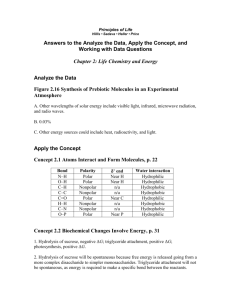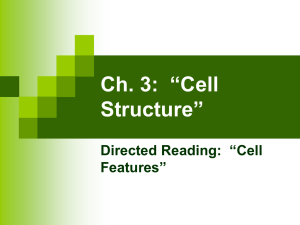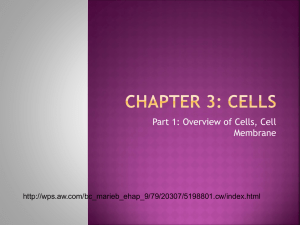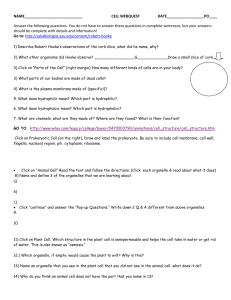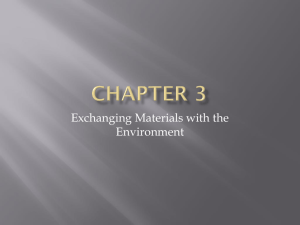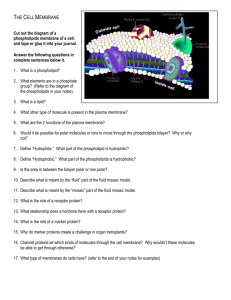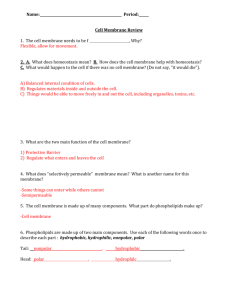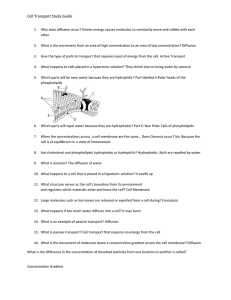Section 2- Solution key:
advertisement
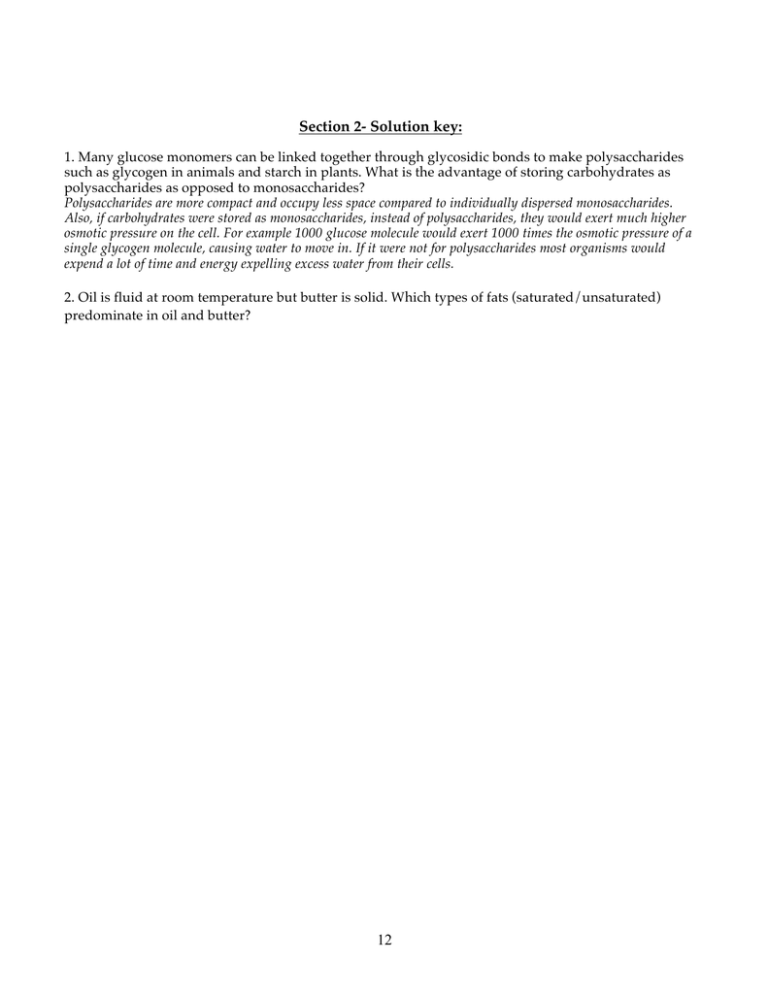
Section 2- Solution key: 1. Many glucose monomers can be linked together through glycosidic bonds to make polysaccharides such as glycogen in animals and starch in plants. What is the advantage of storing carbohydrates as polysaccharides as opposed to monosaccharides? Polysaccharides are more compact and occupy less space compared to individually dispersed monosaccharides. Also, if carbohydrates were stored as monosaccharides, instead of polysaccharides, they would exert much higher osmotic pressure on the cell. For example 1000 glucose molecule would exert 1000 times the osmotic pressure of a single glycogen molecule, causing water to move in. If it were not for polysaccharides most organisms would expend a lot of time and energy expelling excess water from their cells. 2. Oil is fluid at room temperature but butter is solid. Which types of fats (saturated/unsaturated) predominate in oil and butter? 12 Butter is comprised of saturated fatty acids that only have single bonds, which allow close packing. In comparison, oil is comprised of unsaturated fatty acids that have one or more double bonds that hinder close packing. 3. Each cell in an organism has a plasma membrane that defines its boundaries, however the plasma membranes of different cell types show different fluidity. What factors determine the fluidity of the plasma membrane? This is defined by lipid composition and temperature. Fluidity of the membrane increases proportionately with an increase in the unsaturated fatty acids, short chain fatty acids or phospholipids. It also increases with an increase in temperature. 4. When biomedical researchers design drugs that must enter cells to be effective, they often add methyl (-CH3) groups, which make the drugs more likely to enter the cells. Why does this work? Plasma membrane is comprised of lipid bilayer with proteins embedded in it. Adding nonpolar, hydrophobic methyl groups (-CH3) to the drug enhances the chances of the drug (which may otherwise be hydrophilic and hence incompatible for the hydrophobic atmosphere provided by the lipid bilayer) to cross the lipid bilayer and enter the cell to mediate its action. 5. The structure of one lipid that can use to make up a lipid monolayer is shown below. Why would you not need a bilayer (i.e. but instead could use a lipid monolayer) if you used this specific kind of lipid to make up a cell membrane? R2 R1 Note: R1 & R2 represent charged groups and “∧” represents bonds between C and H atoms. A cell membrane is comprised of lipid bilayer with proteins embedded in it. The hydrophobic tails of the lipids molecules face each other and remain hidden in the non-aqueous interior of the lipid bilayer whereas the polar, hydrophilic heads of the lipids molecules form the extracellular or cytosolic surface of the lipid bilayer. Since the molecule shown in the schematic above has polar R1 and R2 groups at the two ends and a hydrophobic chain in between, it can assemble with similar molecules to form a lipid monolayer that will have a hydrophobic interior and hydrophilic exterior, as is observed in a cell membrane. 6. The following diagram represents a substrate molecule bound to the active site of a protein. The R groups from the amino acids in the protein’s substrate-binding region are shown. Each of the four R groups from the protein that interacts with the substrate is numbered on the figure below. For each side chain, state the strongest type of interaction it could have with the substrate in the configuration shown below. Your choices are: Covalent, Hydrophobic, Ionic, Hydrogen, and Van der Waals. Also classify each R group as hydrophobic, polar or charged. This is the simplest correct bonding arrangement of the atoms and charges. N O Solution Substrate H H H H 1 C C H O C O N C C H O C H C H C C 4 H C C C C H 13 H H H H C H H H C H C H S C C H H H C 3 a) Identify the amino acids (1), (3) and (4) in the schematic above. #1; asp, #3: val and #4:asn b) Classify the amino acids that you have identified above as polar/nonpolar, charged/ uncharged and hydrophilic/hydrophobic. Asp is polar/ charged/hydrophilic, cys is polar/uncharged/hydrophilic, , val is nonpolar/ uncharged/hydrophobic and asn is polar/uncharged/hydrophilic. c) Complete the following table. R Group (1) (3) (4) Interaction(s) of R Group with Substrate Ionic, (Hydrogen bonding also possible) Hydrophobic / Van der Waals Hydrogen bonding 14 Classification of R Group Charged, polar, hydrophilic Nonpolar, hydrophobic Polar, hydrophilic MIT OpenCourseWare http://ocw.mit.edu 7.013 Introductory Biology Spring 2013 For information about citing these materials or our Terms of Use, visit: http://ocw.mit.edu/terms.
